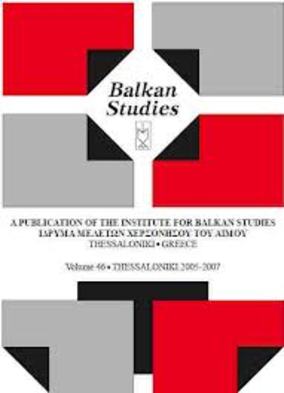Constantinople : A city under threat July 1922
Part of : Balkan studies : biannual publication of the Institute for Balkan Studies ; Vol.40, No.2, 1999, pages 339-359
Issue:
Pages:
339-359
Section Title:
Articles
Author:
Abstract:
This article will compare the press accounts of four major newspapers—the New York Times, The Times of London, The Age and Argus (Melbourne,Australia)— reporting of the Greek attempt to occupy the city of Constantinoplein July 1922. It will also compare newspaper accounts with that ofarchival sources-manuscripts, published and unpublished documents.These four newspapers were pre-eminent and had political influence intheir respective countries. As important publications they attained their reputationthrough reliability and for presenting the most convincing image ofgovernment thinking. The élite members of society-civil servants, scholars,politicians, religious and business leaders read them. The Greek threat to occupy Constantinople is a news-value event for threeimportant reasons. Firstly, Constantinople was under British, French andItalian occupation as part of the provisions of the Treaty of Sevres; secondly itwas the capital of the Ottoman Empire under the authority of the Sultan; andfinally there was a possibility of conflict between Greece and the occupyingpowers in Constantinople. With the Greek-Turkish War 1919-1922 in a stalematesituation, the Greeks considered the occupation of Constantinople astheir last attempt to force the Kemalists into action. To their surprise, theallies were not prepared to allow them to occupy this city. The Allies took theGreek threat seriously by taking the necessary military and naval measures inorder to forestall a Greek advance on Constantinople. The press articles onthe attempted Greek occupation were anti-Greek in tone. This was due to KingConstantine’s pro-German sympathies during the First World War.
Subject:
Subject (LC):
Keywords:
Κωνσταντινούπολη 1922




